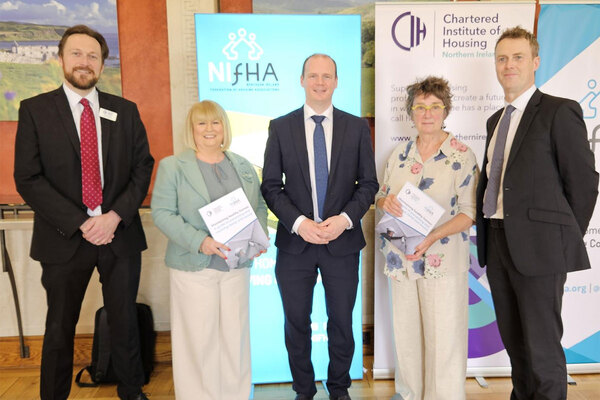‘Brutal’ regulatory process deterring house builders from setting up for-profit providers
A “brutal” regulatory process is deterring house builders from setting up their own for-profit registered providers (FPRPs), sector professionals have said.

The process led some senior leaders of for-profits to believe that it was “probably more advantageous” for developers to buy a pre-existing FPRP “off the shelf” to bypass the registration process.
This summer, Inside Housing reported how large house builders were looking to set up their own FPRPs to take on Section 106 affordable homes they were struggling to sell to housing associations.
However, during a panel session at the Social Housing Annual Conference in London on Wednesday, FPRPs said these house builders had “grossly underestimated” how heavily regulated the sector is.
Barbara Richardson, managing director of Square Roots, a for-profit provider owned by developer London Square, said her organisation does not take on its owner’s Section 106 properties.
She said: “Some of the house builders that have deemed to tackle this market have done so because they have been concerned because they have got issues with getting some of their Section 106 affordable homes away, and… [if] they’ve got a company that can take them from them, then they can unlock some of their sites that are getting stalled because they can’t take the private forward either.
“How many of them have actually done it and been that successful, I’m not sure. It’s a painful process. I think a lot of them would prefer to just buy one off the shelf if there was one out there and crack on with it.”
Abdul Ravat, a board member of for-profit Funding Affordable Homes, added: “The power of the regulator cannot be overstated here. The regulatory process to become a registered provider is, to put it bluntly, brutal.
“It can take you anything up to 18 months to two years, it costs you a lot of money in terms of all the advice that you need to underpin the application, and the success rate is about 20%.
“That’s probably hit home to a lot of these potential applicants… Buying one off the shelf from someone is probably more advantageous,” he said.
“Any developer who wants to go down this route has to think long and hard about strategic intent and the long-term objectives that they’ve got in mind before they even embark on a phone call with the regulator.”
Ms Richardson added: “I think they grossly underestimate how heavily regulated an RP [registered provider] is and what’s really involved, and then when they find out what’s really involved they’re less excited about it.”
Chris Newman, director of the housing consultancy at Savills, admitted that “there is a high attrition rate on FPRP registrations”.
But he said: “If you’re properly advised and you have the necessary structures and processes internally, it shouldn’t be a problem… We could comfortably do one in 12 months and regularly do.”
Mr Newman continued: “Will we see lots of house builders registering? Possibly not. All it will take is a change to the housing market and all of a sudden they will decide that the best position is to start selling [Section] 106s back to traditional RPs and FPRPs that are already in existence.”
Ms Richardson also pointed out that even if a house builder sets up its own FPRP, they will still need to raise the money to buy the affordable homes from their parent company.
“They’re still as a house builder expecting to receive some kind of receipt for that affordable housing, even if that receipt has now gone down in value,” she said. “They might have their own nice big pipeline that they can just flood into it, but that company’s still got to buy it off of it in a transactional way.”
Despite the challenges around entering the FPRP market, the panellists agreed that private investment in affordable housing would grow rapidly over the next five years.
Mr Newman said: “The proportion of transactions [and] acquisitions that we see from FPRPs is only going to grow and, in fact, it will be seen as the norm as opposed to a small part of the market that is becoming increasingly prevalent.”
Ms Richardson said Square Roots is looking to attract more foreign investment and predicted “more non-domestic investors into the sector that have impact funds or carbon neutrality-type targets that we can deliver for them”.
A spokesperson for the Regulator of Social Housing said: “We register landlords that meet our registration criteria. Our process is robust and applicants must demonstrate their eligibility to become a registered provider in line with the Housing and Regeneration Act 2008.
“There is a high bar to become a registered provider as these landlords are responsible for housing people who are unable to access the housing market in other ways. We will not accept tenants being put at risk by unviable landlords or those not focussed on their safety.
“Investor confidence in the social housing sector is heavily influenced by our regulation. The sector remains an attractive destination for private capital because lenders can trust that we are robustly scrutinising the landlords within our remit.”
Sign up for our development and finance newsletter
Already have an account? Click here to manage your newsletters











